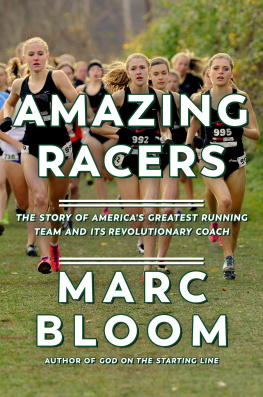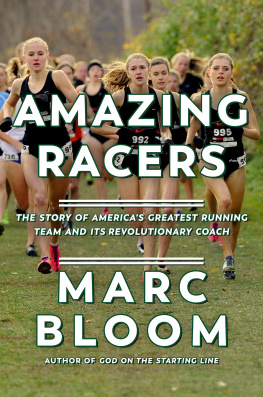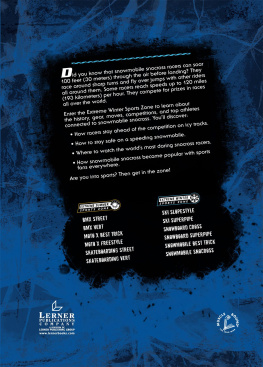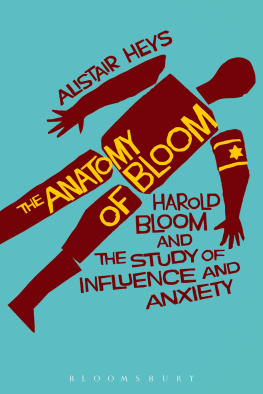Marc Bloom - Amazing Racers
Here you can read online Marc Bloom - Amazing Racers full text of the book (entire story) in english for free. Download pdf and epub, get meaning, cover and reviews about this ebook. year: 2019, publisher: Pegasus Books, genre: Art. Description of the work, (preface) as well as reviews are available. Best literature library LitArk.com created for fans of good reading and offers a wide selection of genres:
Romance novel
Science fiction
Adventure
Detective
Science
History
Home and family
Prose
Art
Politics
Computer
Non-fiction
Religion
Business
Children
Humor
Choose a favorite category and find really read worthwhile books. Enjoy immersion in the world of imagination, feel the emotions of the characters or learn something new for yourself, make an fascinating discovery.
- Book:Amazing Racers
- Author:
- Publisher:Pegasus Books
- Genre:
- Year:2019
- Rating:3 / 5
- Favourites:Add to favourites
- Your mark:
- 60
- 1
- 2
- 3
- 4
- 5
Amazing Racers: summary, description and annotation
We offer to read an annotation, description, summary or preface (depends on what the author of the book "Amazing Racers" wrote himself). If you haven't found the necessary information about the book — write in the comments, we will try to find it.
Amazing Racers — read online for free the complete book (whole text) full work
Below is the text of the book, divided by pages. System saving the place of the last page read, allows you to conveniently read the book "Amazing Racers" online for free, without having to search again every time where you left off. Put a bookmark, and you can go to the page where you finished reading at any time.
Font size:
Interval:
Bookmark:

AMAZING
RACERS
AMAZING
RACERS
THE STORY OF AMERICAS GREATEST RUNNING TEAM
AND ITS REVOLUTIONARY COACH
MARC BLOOM

PEGASUS BOOKS
NEW YORK LONDON
For the young: the audacious
cross-country runners of
Fayetteville-Manlius, and
my grandchildrenJordana,
Max, Jade and Levi
truth seekers all
At the camp, we learned a lot about love. Thats what brings all of us together as a team, the runners and coaches. Each person has that bond of love. Thats what we use to run hard.
Jared Burdick, Fayetteville-Manlius cross-country runner
I n the fall of 2004, on a pleasant Saturday at Van Cortlandt Park in the Bronx, I learned of some powerful new ideas in the training of young runners. These ideas heralded a new era in the development of high school cross-country teams, the foundation of the sport. The significance of these bold ideas was so deep and far reaching that they would alter the nurturing of children into teenagers and teenagers into young adults. While the ideas grew out of an athletic commitment, they were intended to create a new person first, a new way of looking at the self, the team, the land, the community. With the forming of this new athletea new boy, a new girla dramatic transformation would occur: indeed, a revolution.
And when these boys and girls ran, when they won again and again, when they were so far superior to all opposition, separating themselves into a realm all their own with a mystique they carry to the present day, they became... revolutionaries.
The ideas were conveyed to me that October day by the athletes coach, Bill Aris, after his high school boys team, Fayetteville-Manlius, from the Syracuse area, had achieved a performance never before thought possible in a cross-country competition. Breakthroughs usually have some finely wrought essence to them, a peak built on inner strength and perhaps a touch of daring risk. As I found out that day, Bill had the goods.
Near the finish of the Manhattan Invitationals high school two-and-half mile racecourse, a hilly pathway used by runners since the late nineteenth century, I corralled Aris and two of his boys after the race for an interview. I was putting out my Harrier publication on cross-country running and needed to report on how a team that few people knew about could not only defeat but vanquish Christian Brothers Academy (CBA) of New Jersey in the most important regular-season cross-country event in the United States.
At the time, I lived just a few miles down the road from CBA in Monmouth County. Id seen the Colts run roughshod over state opposition for decades and earn national prominence just about every year for their distance-running prowess in both track and cross-country. The previous fall season, in 2003, CBA, winner of thirteen New Jersey State Meet of Champions cross-country titles, captured the Eastern States Championship, held at Van Cortlandt, by over one hundred points. In my Harrier national team rankings at the end of 2003, I had CBA at eleventh in the country. And they promised to be every bit as good, if not better, in 2004.
So how could a bunch of young men who had not done a single thing of note in the previous springs track season suddenly, a few months later, demolish CBA? Fayettevilles race that day at Van Cortlandt was like a ball club from the cellar rising up and winning the World Series. Or like a marathoner from Liechtenstein winning the Olympics.
There was just no precedent for what F-M, as they would come to be called, did on those Bronx hills. It made no sense. Running was a science. Training was progressive. Racing was logical. Boys were boys.
Something new had to be responsible. But what?
Wethe running community, from name-brand coaches and exercise physiologists on downthought we knew everything there was to know about running. This was the twenty-first century, after all. We had every technological convenience. We could size up runners in the lab and come up with acute subtleties on how they should run every mile for optimal performance. We attended clinics by specialists using PowerPoint displays to show how much oxygen was consumed at every running pace and how slight variations in arm swing or hip tilt meant seconds faster or slower in competition.
We knew that the necessities of racing the two-and-a-half mile cross-country race on the undulating Van Cortlandt Park coursea near sprint on the opening flats for a quarter-mile or so, good rhythm on the bouncy Cowpath, unrelenting toughness on the steep Back Hills, freewheeling fearlessness around Roller Derby Turn on the downhills, and a final, furious kick on the long home straightdepended on this:
You did your summer base work, putting hundreds of miles in your legs. As fall approached, you added long tempo runs, like hard six-milers, and long repeat work, like six times a thousand meters. You did a weekly long run of ten to fifteen miles at a steady pace, building your aerobic reserves. Once racing began, you added some shorter, quicker work to the mix. And all along you did hills, every hill you could find, while your quadriceps muscles strengthened with the hardness of a fully inflated bicycle tire. These were the staples. Every good coach knew them. Every good team did them. CBA did them. The CBA head coach, Tom Heath, lived by them.
The Colts had made the most of their close proximity to Holmdel Park, the New Jersey state meet site with its abundantly hilly trails, most notably the feared Bowl, and all manner of terrain for every type of workout. Over the years, Heath had devised training that had become legendary for its rigor, and any young Colt who could handle it was, almost by divine providence, a candidate for the schools vaunted varsity cross-country lineup.

Cross-country was not for the weak of heart or muscle or spirit. It wasand isa consuming endeavor. In the high school ranks, wiry, freckle-faced boys with the small, innocent features of a Norman Rockwell painting would become ferocious competitors, astounding parents who never dreamed their sons had that kind of capacity, waiting to rise up with volcanic force, waiting for a coachthe seer who knew how to bring it out. Whether his style was humorous or full of bluster, whether he was a true-blue runner himself or had a spreading girth, the coach would be the one to push that boy into manhood and up to the heavens.
At CBAan all-boys private school with no football team to get in the way of cross-country recruitmentHeath fashioned a commanding character all his own. A boy did not dare let him down. A boy did not dare fail to keep up. It was not by happenstance that by 2004, CBA had surpassed three hundred straight dual-meet victories (one team versus another) in a national-record streak that has continued to build, unbroken, to the present day.
On this Saturday at Vannie, when Fayetteville lined up with CBA in the Manhattan Varsity C race, CBA was like Goldman Sachs and Fayetteville a feisty entrepreneurial start-up trying to establish credibility in a mergers-and-acquisitions fight with the big boys. The previous week, Fayetteville had set a team time record at the McQuaid Invitational, New Yorks largest upstate meet, in Rochester. The course, Genesee Valley Park, had no hills to speak of. CBA was coming off a victory in a statewide event in New Jersey, the Shore Track Coaches Association meet, at Holmdel Park. While the Colts were as well known as Yankees sluggers stepping up to the plate, Fayetteville brought an element of mystery to Van Cortlandt. The F-M runners were from the boonies, or so many thought. Manlius, where the school was located, was one of those upstate towns you heard about only when some dark crime was committed, as in a Joyce Carol Oates novel. Could these boys handle the showtime factor of the big city (something that would come back knocking on Fayettevilles door at the end of the season)? Rochester was off-off-Broadway. Van Cortlandt
Next pageFont size:
Interval:
Bookmark:
Similar books «Amazing Racers»
Look at similar books to Amazing Racers. We have selected literature similar in name and meaning in the hope of providing readers with more options to find new, interesting, not yet read works.
Discussion, reviews of the book Amazing Racers and just readers' own opinions. Leave your comments, write what you think about the work, its meaning or the main characters. Specify what exactly you liked and what you didn't like, and why you think so.









